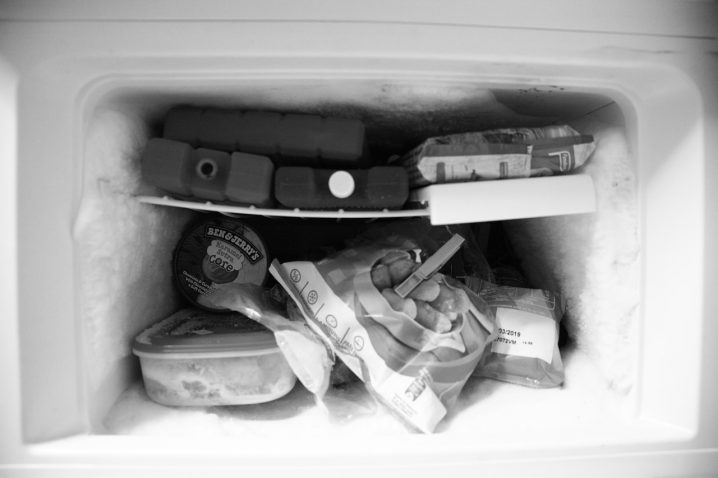Your freezer is an important kitchen appliance. It’s the place you stash extra Girl Scout cookies and frozen treats for summer like popsicles and ice cream sandwiches. It’s frustrating when too much ice builds up, but it’s crucial to defrost the right way.
Large chunks of ice are time-consuming to defrost, and you might have the urge to hit the ice with a tool of some kind. That’s a bad idea that can break your freezer. There’s a better way.

Here’s how to safely defrost your freezer and control ice build-up so you never have to face those large chunks of ice again:
- Don’t use tools
If you’ve ever wanted to take an ice pick to your freezer, you’re not alone. People use ice picks to break up freezer frost all the time. Unfortunately, it doesn’t always end well. All it takes is one tiny pinhole-sized puncture for the coolant to escape and render your freezer useless.
Using an ice pick on a standard freezer attached to a refrigerator is asking for trouble. There’s hardly any space to maneuver, and there’s a good chance you’ll burst through the ice down to (and through) the aluminum.
The most tempting freezer to use an ice pick on is a chest freezer because you’ve got more room to control your movements, but that’s a bad idea, too. All it takes is one misjudgment and that pick will penetrate the aluminum wall.
The right way to defrost a chest freezer is to:
- Reduce your freezer contents
- Relocate frozen foods you want to keep (with a neighbor or in an ice chest)
- Defrost the freezer according to the manufacturer’s instructions
- Clean and dry the freezer
- Bring the freezer back to the proper temperature
If you’ve punctured your freezer using an ice pick or similar tool, try this
Your first instinct might be to call the manufacturer if you still have an active warranty on your freezer. Unfortunately, warranties don’t cover ice pick damage. The manufacturer will tell you to buy a new appliance, but there’s another option: repair.
A New York Times article provides insight from refrigerator repair expert Henry Michalski on how ice pick damage can be repaired. Once all refrigerant has been purged from the tubing, a patch is soldered over the hole. “Soldering is not difficult, Michalski said, “but it is if it’s made of aluminum. If you hold a torch even a second too long, zap! You’ve got a bigger hole than you started with. People are somewhat justified in saying replace rather than repair because few are qualified [to solder].” The whole process takes less than four hours.
Technically the manufacturer is right about needing to replace an appliance if they don’t perform this specialized repair, but don’t let that hold you back from calling an appliance repair company.
- Perform a full and proper defrosting session
To defrost your freezer properly, begin by turning it off and unplugging it. If you have a switch to turn off just the freezer, use this switch. Then:
- Place a bunch of towels or baking trays at the bottom to catch the water as it melts.
- Next, scrape out as much frost as you can with a spatula (not an ice pick).
- Place a bowl of hot water into the freezer to increase the temperature and speed up the process
- Scrape more ice out as it melts
- Clean up when you’re done
- Perform regular, scheduled defrost sessions
Life is busy, but it’s worth scheduling time to defrost your freezer on a regular basis. A freezer full of frost blocks the vents that circulate cool air to the whole unit, which means your food could be spoiling without your knowledge. If you’ve got a one-door mini-fridge, a frosty freezer blocks the cool air from circulating through the refrigerator, too.
Most people will only need to defrost a standard freezer once every month. If you need to defrost more frequently, consider the next tip for controlling the temperature.
- Dial down the temperature
In newer units, you can set a precise temperature; in older units, you’re limited to a dial that indicates a minimum and maximum temperature. If you’re defrosting thick chunks of ice frequently, dial down the temperature in your freezer one number at a time. Track the time between defrosting sessions. Settle on the lowest temperature that keeps food frozen, but doesn’t create a wall of ice after a few weeks.
It’s all about regular maintenance
Frustrated with the amount of ice your freezer accumulates? Regular defrosting sessions will help. Try it for a couple months and see how easy it is.



